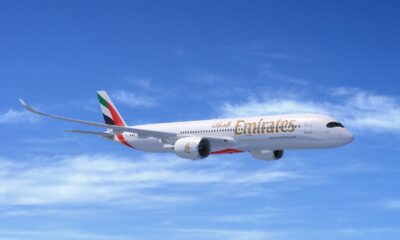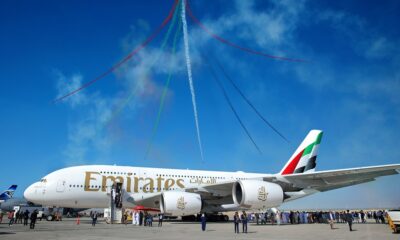Aviation
Why Emirates A380 kept flying after receiving a loud noise alert.
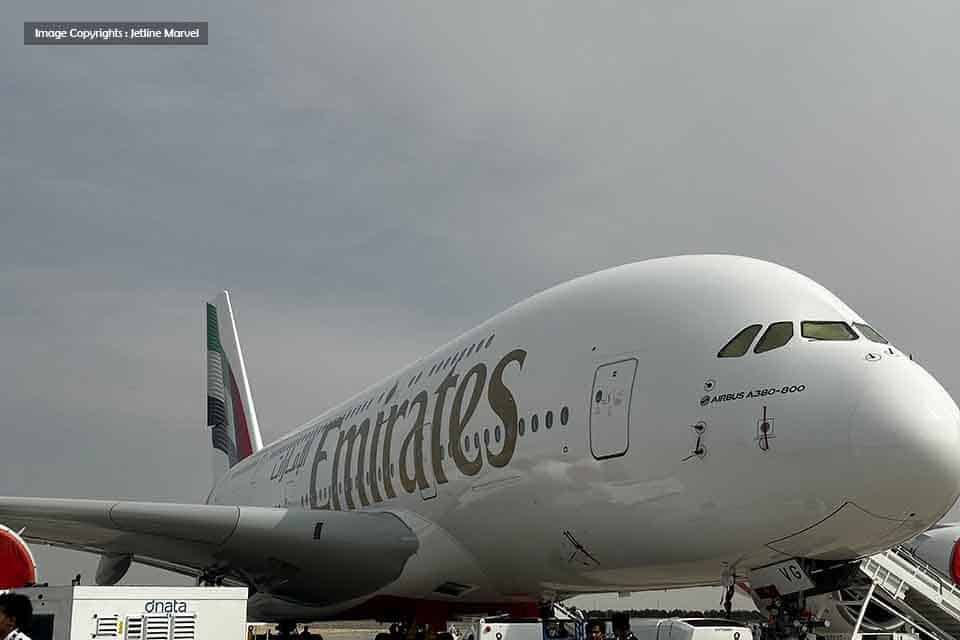
According to the source At 10.45 p.m. on Saturday, the Emirates A380 departed from Dubai and touched down at Brisbane International Airport. After takeoff, according to passengers, they heard an Loud noise but had no idea what was going on during the lengthy journey. after landing all surpise with the big hole in the aircraft left side landing gear area.
However, other sources support the Emirates crew’s decision. Let’s look at the specifics. There have been numerous rumours about the safety of the aircraft flying 14 hours after the crew was informed of the noise and malfunctioning landing gear.
Why Emirates kept flying after receiving a loud noise alert.
The enormous Emirates A380 is driven by four engines and has a more passenger capacity Typically, a 14-hour trip requires a significant amount of gasoline, or about 1,80,000 kg (maximum fuel capacity: 253,983 kg). As soon as the Emirates crew heard the noise, they immediately realized it was a tyre explosion. However, after reviewing the system, everything appeared to be in order because this area is unpressurized, and they may have even called the ATC to tell them of the circumstances. further It is preferable to keep going and be 180 tonnes lighter than to turn around and land in Dubai at 80 tonnes over the maximum landing weight if there are no other warning signs than a tyre with low pressure. The crew will have spoken about this with the airline safety department and decided in accordance with it.
Is continuing the flight the best course of action?
According to the source comments Everyone concerned with safety has to understand that the crew made the perfect choice. Turning around and landing at DBX would have been far riskier than continuing and consuming fuel that would have otherwise been discharged, harming the environment. At normal landing weights, the loss of one tyre is not a problem for the A380, but if they had turned around at the greater landing weight, the risk would have increased noticeably.
Emirates Airbus A380 (A6-EVK) departed rwy 30L at Dubai (OMDB), VAE on flight #EK430 to Brisbane, Qld, Australia where it landed safely. After landing, a large hole was seen in the left fuselage, allegedly coming from a detached bolt in the nosegear.https://t.co/o1EqBuJ0bA pic.twitter.com/s4p6tIpXDw
— JACDEC (@JacdecNew) July 2, 2022
The reason behind the loud blast.
Some reports state that shortly after the Emirates A380 took off from Dubai, a left side rear loose bolt blew a huge hole in the side of the aircraft. This resulted in the tyre blast. Additionally, the pilot kept going to their destination despite hearing an explosion. All of the systems appear to be functioning normally. However, they informed Brisbane ATC of the malfunctioning landing gear as they approached, landed safely, and arrived on schedule.
The plane will stay in Brisbane for inspection and maintenance. The wellbeing of our workers and passengers has always come first. Additionally, the investigation must determine the fault’s root causes.
#Emirates, Airbus #A380 (A6-EVK) flight #EK430 has landed in #Brisbane with a hole in the side of aircraft after a wheel exploded during its take off from #Dubai, crew told to ATC during its approach to Brisbane.
? Avherald#Airbus #Australia #UAE #aviation #AvGeek #avgeeks pic.twitter.com/WjmKmde8wi
— FlightMode (@FlightModeblog) July 3, 2022
The crew at Emirates A380 handled the matter perfectly?
Some sources comments claim that the Airbus A380 has a highly developed system that must have detected the error but did not result in a safety concern issue because the crew must be highly experienced and have made the proper decisions. The A380 has numerous wheels, so the blowing up of a single tyre may not significantly impair the aircraft landing time. The pilot has spoken with the ground and made the appropriate decisions. They have also been notified of the arriving destinations with the problem. nevertheless maintained the correct judgments. They landed safely and had a great flight with perfect teamwork. They must be well-experienced pilots with the ability to make informed decisions in order to continue the flight 14 hours after the alert.
still reports reflect every detail of the investigation. However, it would appear that whether we’re talking about pilots or aircraft, both are the ideal of safety.

Airlines
US DOT says Airlines must now pay automatic refunds for cancelled flights
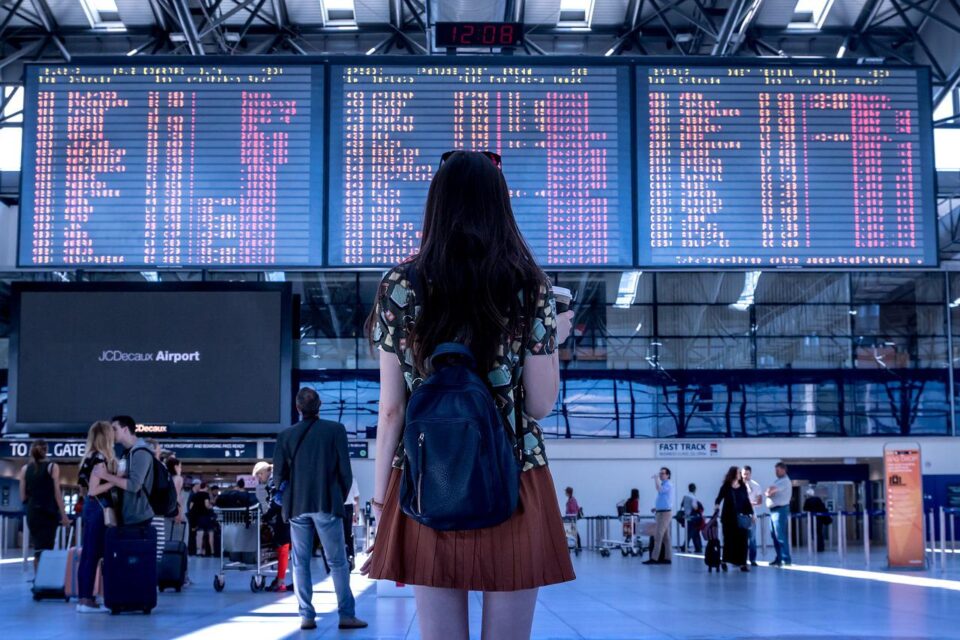
The U.S. Department of Transportation (DOT) has released a final regulation requiring airlines to quickly reimburse passengers with automatic cash refunds when owed, according to a statement made by the Biden-Harris Administration.
Under the new regulation, passengers will find it easier to get refunds when airlines dramatically alter or cancel flights, cause severe delays for checked baggage, or don’t supply the additional services they paid for.
According to a statement from the Biden-Harris Administration, the U.S. Department of Transportation (DOT) has published a final rule mandating airlines to promptly compensate customers with automatic cash refunds when they are eligible. The new rule would make it simpler for customers to receive refunds from airlines in cases when they drastically change or cancel flights, cause significant delays for checked luggage, or fail to provide the extra services they charged for.
Under the latest rule from the USDOT, passengers are guaranteed refunds in several scenarios:
- Canceled or Significantly Changed Flights: Passengers are entitled to refunds if their flight is canceled or significantly altered, including changes in departure or arrival times exceeding 3 hours domestically or 6 hours internationally, departures or arrivals from different airports, increased connections, downgrades in service class, or changes less accommodating to passengers with disabilities.
- Delayed Baggage Return: Passengers filing mishandled baggage reports can claim a refund for checked bag fees if their luggage is not returned within specific timeframes after flight arrival.
- Unprovided Extra Services: If airlines fail to deliver paid extra services like Wi-Fi, seat selection, or inflight entertainment, passengers can request refunds for those fees.
The final rule streamlines the refund process, ensuring it is:
- Automatic: Refunds are issued automatically without requiring passengers to request them.
- Prompt: Airlines must refund credit card purchases within seven business days and other payment methods within 20 calendar days.
- In Original Form of Payment: Refunds are provided in the original payment method used for purchase.
- Full Amount: Passengers receive full refunds minus the value of any portion of transportation already used, including government and airline fees.
Suggest banning family seating junk fees and ensuring that parents can travel with their kids at no additional cost. No airline promised to ensure fee-free family seating prior to efforts from President Biden and Secretary Buttigieg last year. Family seating is now guaranteed free of charge on four airlines, and the Department is working on a plan to eliminate family seating junk fees.
Propose to make passenger compensation and amenities mandatory so that travelers are taken care of when airlines cause flight delays or cancellations.
Airlines
The Nine Freedoms of the Air – Jetline Marvel
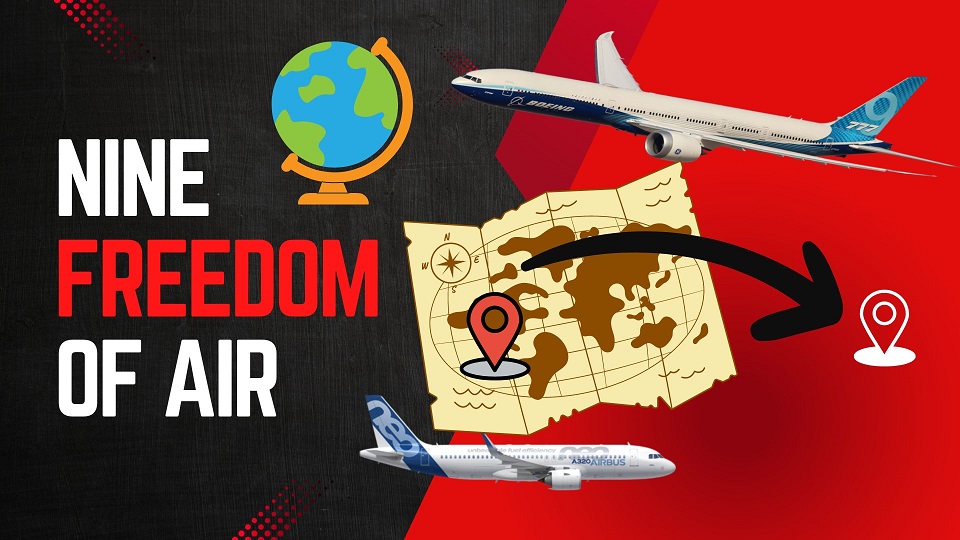
Most of us travel from one city to another city via road we need to get permission to that specific city if it is in another country like a visa or Road access permission to use its property for revenue purposes to carry passengers and Cargo. Similarly, In the airline Industry, it is also important that the Company have permission to fly and access that country whether it’s for stoppage flying above them, or Operating the passengers within that country This is called Freedom of the Air.
Some countries together they agree with certain conditions to access their Aerospace for to access for the airline to travel above their nation. If the bilateral is done for Their own countries’ airlines or other countries’ airlines. In this chapter, we understand how this thing is carried out. What all the condition has to look into that.
The Freedoms of the Air are international commercial aviation agreements (traffic rights) that grant a country’s airline(s) the privilege to enter and land in another country’s airspace. They were formulated in 1944 at an international gathering held in Chicago (known as the Chicago Convention) to establish uniformity in world air commerce. There are generally considered to be nine freedoms of the air.
Most nations of the world exchange first and second freedoms through the International Air Services Transit Agreement. The other freedoms,chase freedom airline miles when available, are usually established between countries in bilateral or multilateral air services agreements. The third and fourth freedoms are always granted together. The eighth and ninth freedoms (cabotage) have been exchanged only in limited instances
First Freedom:
The basic permission granted to an airline from one country (A) to fly through the airspace of another country (B)
Second Freedom:
The permission for a commercial airplane from country (A) to land and refuel (often called a technical stop) in another country (B).
Third Freedom :
The privilege for an airline to transport paying (Revenue) passengers from its home country (A) to another country (B).
Fourth Freedom
The rights for an airline to transport paying (Revenue )passengers from another country (B) to the airline’s home country (A).
Fifth Freedom
Fifth Freedom (also known as beyond rights): The rights for an airline to transport passengers from its home country (A) to a destination (B), then pick up and carry passengers to other international destinations (C).
Sixth Freedom:
Sixth Freedom (Combination of Third & Fourth Freedoms) The right for an airline to carry passengers or cargo between two foreign countries (B and C), provided the aircraft touches down in the airline’s home country (A).
Seventh Freedom:
The authorization for an airline to operate flights that start in a foreign country (B), skip its home country (A), and transport passengers to another international destination (C).
Eighth Freedom Air
The rights for an airline to transport passengers from one location within a country’s territory (B) to another point within the same country on a flight originating in the airline’s home country (A). This right is commonly referred to as cabotage and is notably scarce outside of Europe.
Ninth Freedom Air
The entitlement for an airline from a specific country (A) to begin a flight in a foreign country (B) and transport passengers from one location to another within that foreign country. This concept, also referred to as stand-alone cabotage, distinguishes itself from the traditional aviation definition of cabotage by not directly involving the airline’s home country.
Aviation
Air India’s B747 Makes Its Final Journey, Waving Farewell to Fans

In a poignant moment marking the end of an era in aviation history, Air India’s iconic Boeing 747 aircraft, affectionately known as the ‘Queen of the Skies,’ embarked on its ultimate journey from Mumbai’s international airport.
The departure, bound for Plainfield, USA, where it will undergo dismantling and part-stripping under the ownership of American AerSale, signals the closure of a storied chapter for the airline.
Once revered for transporting dignitaries ranging from prime ministers to presidents, the Boeing 747 has etched itself into aviation lore. Yet, as airlines worldwide pivot towards more contemporary and cost-effective aircraft, Air India’s decision to bid farewell to its remaining Boeing 747s reflects the pragmatic realities of today’s aviation landscape.
The sale of these majestic planes to AerSale represents a strategic move by Tata Group, Air India’s new custodian, towards optimizing operational efficiency and embracing modern industry standards. Out of the four aircraft sold, two will be repurposed into freighters, while the remaining pair will be meticulously disassembled to salvage valuable components.
The final flight from Mumbai witnessed a touching tribute as pilots performed a traditional ‘Wing Wave,’ symbolizing the conclusion of the Boeing 747‘s distinguished service with Air India. This poignant gesture encapsulates the deep sentiment attached to the aircraft’s departure and its significant contribution to the airline’s legacy.
As the Boeing 747 embarks on its journey to Plainfield, USA, nostalgia permeates the air, evoking memories of its maiden flight on March 22, 1971. Over five decades, Air India operated a total of 25 Boeing 747s, each leaving an indelible mark on the annals of aviation history.



